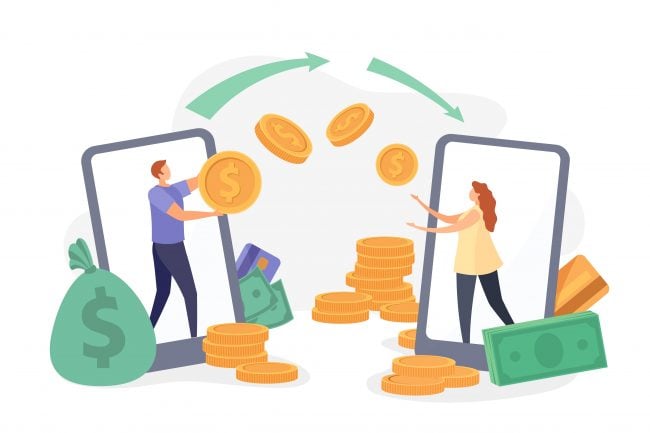Today’s credit card rewards programs strive to appeal to themodern-day consumer, but their roots go all the way back to thelate 1800s. Founded in 1896 by Thomas Sperry and Shelly Hutchinson,S&H Green Stamps was one of the firstretail loyalty programs in the United States. Merchants bought thestamps and distributed them to customers based on the amount oftheir purchases.
|Although the S&H catalog is a distant memory, customerloyalty programs remain popular – and competitive. Today, industryestimates report that more than three out of five credit cards issued in theU.S. are linked to rewards programs. For credit unions andfinancial institutions considering a card loyalty program, it’suseful to know the factors driving consumer engagement with cardreward programs and how cashback compares to loyalty points interms of their preference.
|Vantiv and Socratic Technologies recentlyteamed up to survey 500 consumers about card rewardsprograms. The survey uncovered the following:
|Reward Program Preference
|From gas stations to airlines, quick service restaurants tohigh-end department stores, a wide range of business verticalsoffer card rewards programs and customer participation rates vary.Vantiv andSocratic Technologies’ research revealed that grocerystores and credit card rewards programs have the highestparticipation rates, with 57% and 56%, respectively. This wasfollowed by national retail stores (36% participation), hotels (28%participation) and national restaurants (27%). Credit card rewardsare the favored program, with 37% of respondents preferring creditcard rewards versus 18% preferring grocery store rewards.
|Participation in card rewards programs varies by generationaldemographics as well. Credit card rewards are more appealing tobaby boomers (42% participate) while retirees appear to gravitatetoward grocery store rewards (22%). Gen X-ers have the highestparticipation rates in hotel rewards programs. One-third ofmillennials report that they dislike rewards programs because thereare too many cards to carry (their top complaint), but 20% willprovide their membership information via a mobile wallet.
|Card reward program participation also varies by gender. Forexample, in the past three months, more men (29%) than women (20%)have used an airline rewards program, while more women (65%) thanmen (50%) have used a grocery store loyalty program.
||Why Consumers Sign Up
|Nearly three-quarters of Americans say that rewards are one ofthe most important factors when choosing a credit card. And sign-upbonuses can pave the way to engagement. Reward program sign-upbonuses range from merchandise and gift cards to statement credits,cash and points. While credit union account reward programs usegift cards, cash or merchandise to attract consumers, new creditcard account reward programs tend to feature points or statementcredits.
|The Chase Sapphire Preferred Card, for example,offers cardholders 50,000 bonus points after they spend $4,000 onpurchases within the first three months of opening their account(worth $625 in travel when redeemed through the Chase UltimateRewards program). American Express’ Blue Cash Preferred Cardoffers $150 back in statement credits after cardholders spend$1,000 within three months of account opening.
|Vantiv and Socratic’s research shows that consumers’ top reasonsfor signing up for a rewards program are the points they accumulatefor free merchandise or travel and the automatic discounts theyreceive at the time of purchase. Free shipping is also a plus,especially for Gen X-ers and baby boomers.
|Equally as important as understanding why members sign up isknowing what dissuades potential rewards members from signing upfor a rewards program.
|For one, requiring too much spending to reach a higher statuslevel is one of the leading reasons why members don’t sign up.Frustration with points or rewards that expire too quickly andrestrictions that make it difficult to use the rewards are otherobstacles to participation.
|When it comes to generational preferences, the tracking requiredfor most reward programs puts off millennials more than othergenerations – not surprising considering their preference fordigital offerings.
|Influencing Behavior
|Vantiv and Socratic’s research indicates that consumers’shopping, dining and travel habits are directly influenced by therewards programs they participate in. Rewards program membershipalso impacts how often consumers visit places where they can usetheir rewards and influences how much they spend. In general, thebetter the rewards, the bigger the spend.
|So, Cashback or Points?
|When it comes to credit card rewards programs, Vantiv’s surveyindicates that cash is still king; 59% of rewards programparticipants prefer cashback, compared to 41% favoring points.Still, according to Mick Oppy, senior leader, FI Core Products atVantiv, financial institutions need both.
|“Depending upon your institution, you have cardholders ormembers that lean one way or the other,” Oppy said. “You reallyneed to have both, and make it flexible and simple to participatein a cashback or points program.”
|Oppy notes that card rewards programs are more about buildingstickiness and relationships than they are about driving bottomline revenue. He emphasizes the importance of thinking about cardrewards programs as a customer retention tool and top of walletdriver, and not just a revenue add-on.
|“What you are trying to do is drive interactions with your cardand institution,” Oppy said. “The more you are front and center inyour cardholders’ or members’ minds, the more likely you are likelyto retain that cardholder or member.”
| Traci Heekin is senior loyalty product manager atVantiv. She can be reached at 866-622-2390or [email protected].
Traci Heekin is senior loyalty product manager atVantiv. She can be reached at 866-622-2390or [email protected].
Complete your profile to continue reading and get FREE access to CUTimes.com, part of your ALM digital membership.
Your access to unlimited CUTimes.com content isn’t changing.
Once you are an ALM digital member, you’ll receive:
- Critical CUTimes.com information including comprehensive product and service provider listings via the Marketplace Directory, CU Careers, resources from industry leaders, webcasts, and breaking news, analysis and more with our informative Newsletters.
- Exclusive discounts on ALM and CU Times events.
- Access to other award-winning ALM websites including Law.com and GlobeSt.com.
Already have an account? Sign In
© 2024 ALM Global, LLC, All Rights Reserved. Request academic re-use from www.copyright.com. All other uses, submit a request to [email protected]. For more information visit Asset & Logo Licensing.









